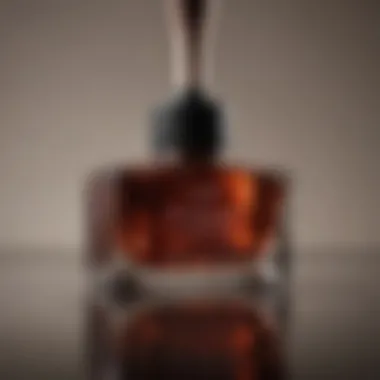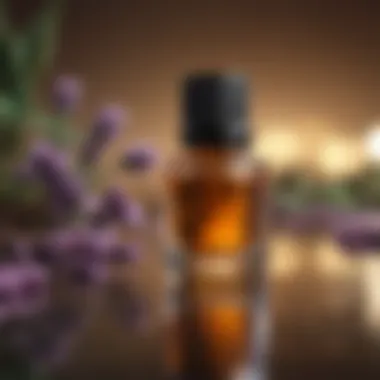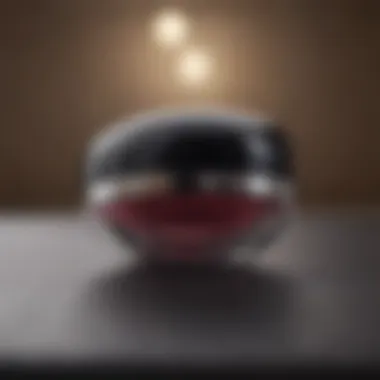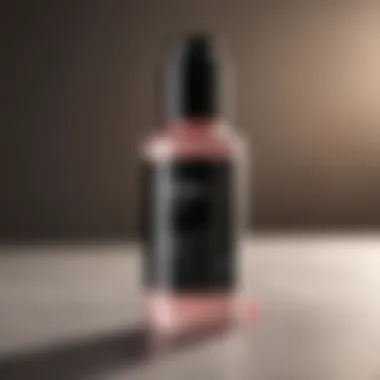Expert Guide on How to Safely Remove Shellac Nails at Home


Introduction
Understanding Shellac Nails
Shellac nails refer to a type of nail treatment that combines the durability of gel nails with the appearance of traditional nail polish. This hybrid product is cured under a UV lamp, creating a long-lasting and chip-resistant manicure. Shellac nails are favored for their mirror-like shine and ability to remain glossy for weeks on end. Understanding the composition and characteristics of shellac nails is crucial for their proper removal.
Benefits of Removing Shellac Nails
The benefits of removing shellac nails extend beyond aesthetics to the health of your natural nails. By safely and effectively removing shellac, you can prevent damage, such as dehydration and brittleness, that may occur if the nails are not properly cared for. Additionally, removing shellac allows for a fresh canvas, enabling individuals to try new nail colors and treatments without the constraints of the previous manicure. This process promotes nail health and hygiene while fostering creativity and self-expression.
Preparation for Shellac Removal
Gather Necessary Tools
Before embarking on the process of removing shellac nails, it is essential to gather the required tools. Acetone, a key ingredient in many nail polish removers, plays a vital role in breaking down the shellac formula. A nail buffer is also necessary to gently roughen the top layer of the shellac, aiding in the removal process. Additionally, cotton balls or pads are needed to apply acetone to the nails effectively.
Protect Your Work Area
Protecting your work area is paramount during the shellac removal process to prevent accidental spills or stains. Lay down a towel or disposable cloth to provide a clean surface for working. Ensuring proper ventilation in the room can help disperse potentially harsh fumes from acetone. By establishing a designated and secure workspace, you can focus on the task at hand without worry of damaging surrounding surfaces.


Methods for Safe Removal
When it comes to removing shellac nails, following safe methods is crucial to avoid damaging your nails. This section will delve into two primary techniques: the soaking method and the wrapping method. Both methods have their unique benefits and considerations, ensuring a safe and effective removal process.
Soaking Method
The soaking method is a popular choice for removing shellac nails as it helps soften the polish for easier removal. This technique involves three essential steps:
Step 1: Buff the Top Layer
Buffing the top layer of the shellac nails is a critical first step in the soaking method. This process roughens the shiny surface of the nails, allowing the acetone to penetrate and dissolve the shellac more effectively. By buffing the nails gently, you can prepare them for the next steps of the removal process.
Step 2: Soak Nails in Acetone
Soaking the nails in acetone is the heart of the soaking method. Acetone helps break down the shellac polish, making it easier to remove without causing damage to the nails. By allowing the nails to soak in acetone, you give the solution time to work its magic and dissolve the shellac layers gradually.
Step 3: Gently Remove Shellac
Once the shellac has softened after soaking in acetone, it's time to gently remove it. Using a soft tool like an orange stick, carefully push off the softened shellac from the nails. Avoid scraping or forcing the shellac off, as this can damage the natural nails. Gently massaging the nails while removing the shellac ensures a safe and effective process.
Wrapping Method


The wrapping method is another effective technique for shellac removal, especially for individuals looking for a mess-free approach. This method also consists of three main steps:
Step 1: Prepare Foils and Cotton Balls
To begin the wrapping method, prepare aluminum foils and cotton balls. The foils are used to wrap around the nails after applying acetone-soaked cotton balls. This wrapping helps secure the acetone in place, allowing it to work on dissolving the shellac while keeping the process contained.
Step 2: Apply Acetone-soaked Cotton
Soak cotton balls in acetone and place them on the nails. Ensure the cotton balls are fully saturated to promote efficient shellac removal. Once applied, wrap each nail with aluminum foil to hold the cotton balls in place. The foil creates a warm environment that speeds up the acetone's action on the shellac.
Step 3: Remove Foils and Shellac
After allowing the acetone-soaked cotton balls to sit on the nails for some time, carefully remove the foils and cotton. The shellac should now be softer and easier to peel off using an orangestick or a cuticle pusher. Gently work the shellac off the nails, taking care not to damage the natural nail underneath. This method offers a tidy and straightforward way of removing shellac nails at home.
Post-Removal Care
In the realm of nail care, post-removal care stands as a crucial and often overlooked aspect. After the meticulous process of removing shellac nails, indulging nails in a regimen of post-removal care can help restore strength and vitality. Neglecting this phase may lead to brittle nails, breakage, or overall nail health deterioration. Hence, post-removal care plays a pivotal role in maintaining healthy and resilient nails even after undergoing the shellac removal process.
Moisturize and Rehydrate Nails


Moisturizing and rehydrating the nails post-shellac removal emerges as a fundamental step in revitalizing nail health. By replenishing lost moisture and nutrients, nails regain their natural flexibility and strength. Opting for a nourishing cuticle oil or a rich hand cream can deeply penetrate the nail plate, fostering hydration and suppleness. Regular moisturization aids in preventing nail brittleness, dryness, and promotes overall nail health, ensuring a glossy sheen and robust texture for your nails.
In the purview of nail care, excessive buffing stands as a common pitfall that can undermine nail health. While buffing can impart a smooth and polished look, overdoing it may strip the nail's natural layers, leading to thinning and weakness. By avoiding excessive buffing post-shellac removal, you safeguard the integrity of your nails and allow them to recuperate naturally. Striking a balance between refining the nail surface and preserving its integrity is paramount to uphold nail health and strength.
Give Nails a Break
After the rigors of shellac removal, granting your nails a hiatus from harsh treatments can profoundly impact their resilience. By refraining from immediate reapplication of nail polishes or engaging in intensive treatments, you furnish your nails with the much-needed breathing space to regenerate and strengthen. Allowing nails to 'breathe' enables them to recover from any trauma inflicted during the shellac removal process. Embracing the simplicity of bare nails for a brief interlude can pave the way for healthier, rejuvenated nails in the long run.
Professional Removal Options
When it comes to removing shellac nails, considering professional removal options can be a wise choice for those seeking expert care and precision. Professionals at salons are trained to execute removal procedures efficiently, ensuring minimal damage to the natural nails. The importance of professional removal lies in the expertise and specialized tools available at salons, delivering impeccable results that may be challenging to achieve at home. While DIY methods are cost-effective, professional removal offers a level of finesse and attention to detail that can elevate the entire nail care experience.
Visit a Salon
Visiting a salon for shellac nail removal guarantees a tailored approach based on individual nail health and condition. Skilled technicians assess the current state of the nails before commencing the removal process, ensuring personalized care and meticulous attention to detail. Moreover, salons often utilize professional-grade products and techniques that enhance the efficiency and safety of the removal procedure. By entrusting the removal to experienced professionals, individuals can relax and enjoy a pampering session while their nails undergo a transformation.
Consider Nail Polish Remover
In situations where visiting a salon may not be feasible, using nail polish remover at home can serve as an alternative method for shellac removal. However, it's essential to exercise caution and select a gentle, acetone-based nail polish remover to avoid damaging the natural nails. Individuals opting for this method should proceed with care, taking the time to follow recommended steps and techniques for safe shellac removal. While DIY removal with nail polish remover may require more patience and attention compared to professional services, it can still yield satisfactory results when executed meticulously and with care.
Conclusion
One of the primary benefits discussed in the article is the empowerment it offers to readers by equipping them with the knowledge and tools necessary to tackle shellac removal at home. By following the detailed steps and recommendations outlined in the guide, individuals have the opportunity to take control of their nail care routine and experiment with DIY methods that can rival professional salon results.
Moreover, the consideration of post-removal care and maintenance highlighted in the guide emphasizes the importance of nurturing nails even after the shellac removal process is complete. Encouraging readers to moisturize, avoid excessive buffing, and give their nails a break underscores the holistic approach to nail health that the article advocates.
In essence, the conclusion of this article serves as a culmination of valuable insights and practical tips geared towards empowering readers to take charge of their nail care regimen confidently. By delving into the nuances of shellac nail removal and addressing post-removal care, the guide offers a comprehensive understanding of the process, ensuring that readers are well-informed and equipped to achieve optimal results.















